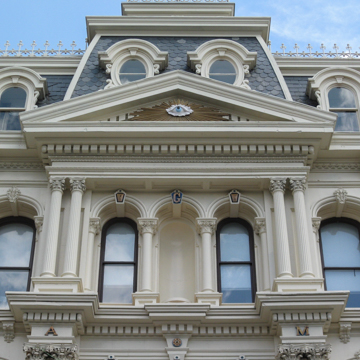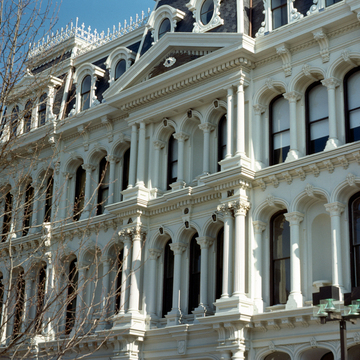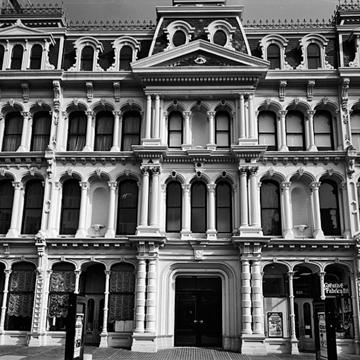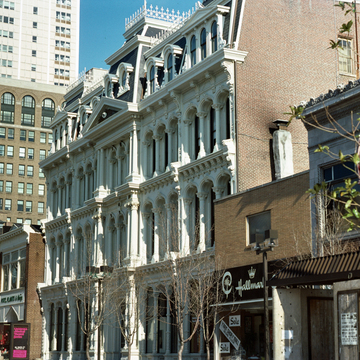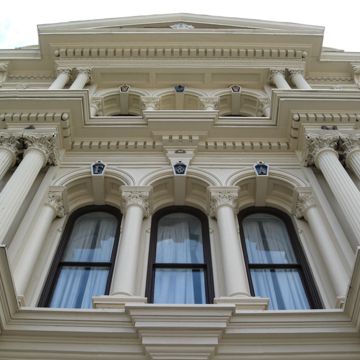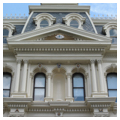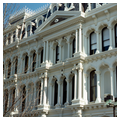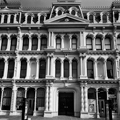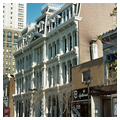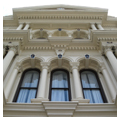In 1869, local Masons offered stock to fund a combination Masonic Hall and Opera House. Dixon and Carson of Baltimore, the former having designed Wilmington's finest new building, Grace United Methodist Church (WL45), were selected from five finalists. A photographer recorded the cornerstone ceremony. The Opera House went up rapidly in 1871; foundations were dug in the spring, with the gala opening taking place before Christmas. Royer Brothers of Philadelphia erected the elaborate, Italianate cast-iron facade. The auditorium, which seated 1,400 and held the third largest stage in the United States, was reached through a narrow hall with stores occupying spaces on either side—rented over the years to sewing machine companies and music shops, among others. The Masons met privately on the third floor, their ownership of the building announced by symbols on the facade: “G” for God and Geometry; an all-seeing eye, also for God; “AF & AM” for Ancient Free and Accepted Masons. The interior was redone in 1909 and the facade given an electric sign reading GRAND. Motion pictures had been shown here as early as 1896, but only now did the place become primarily a movie theater.
Business suffered after 1913 from competition with the Playhouse at the Hotel du Pont, and, although the Grand continued to operate until 1967, it grew increasingly rundown. So, too, did downtown Wilmington, and it was with great hope that some proposed a restoration of the building as the keystone of a larger plan to revitalize the city. A nonprofit group was established with the goal of creating Delaware's first performing arts center, and a team of architects was assembled. Stephen Baird had restored the facade of a nineteenth-century department store in Salt Lake City; James R. Grieves of Baltimore had been involved with the adaptive reuse of an old mill to make the Brandywine River Museum, Chadds Ford, Pennsylvania (1971). First to be restored was the cast-iron facade—Delaware's finest example—in 1974, under the supervision of Baird. This involved the re-creation of the entire fourth story, lost in a fire in 1934, and the arch of the central door. Replacement pieces, based on old photographs, were cast in Salt Lake City. The interior was gutted, except for the original balcony with its cast-iron columns. Windows were returned to the interior walls, but they are blind, to keep noise out. Decorative details in the interior are mostly modern interpretations, although a few are based on surviving fragments. A statue of Thomas Maloney, a Wilmington mayor involved in the renewal of the Grand, has been installed nearby (2004), a late work by octogenarian sculptor Charles C. Parks.















